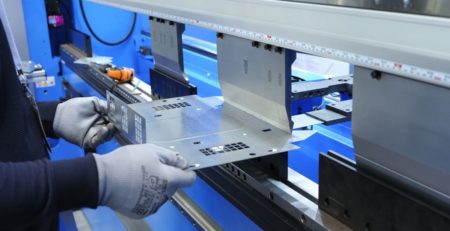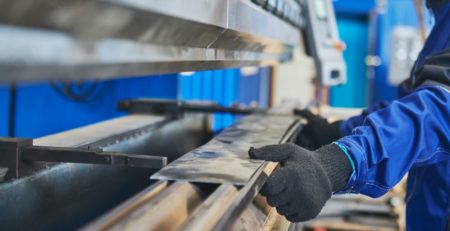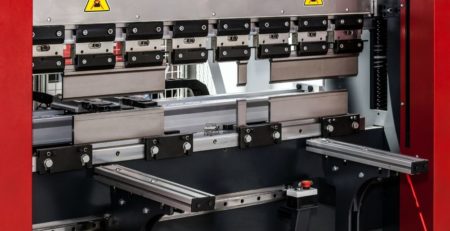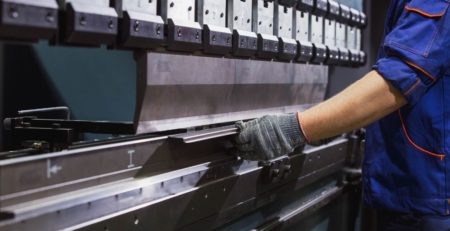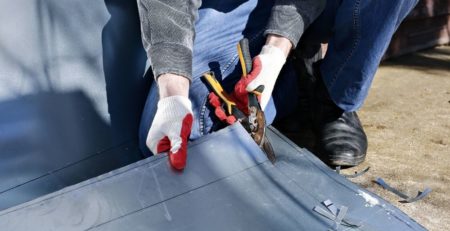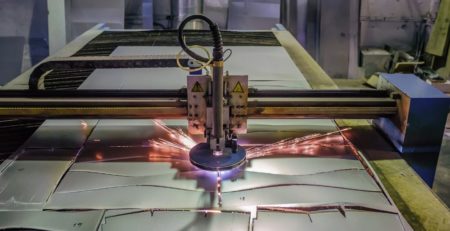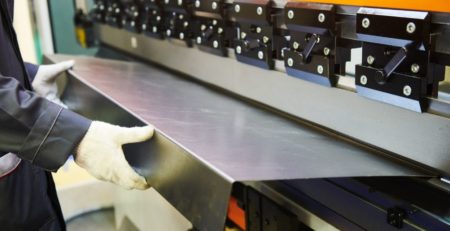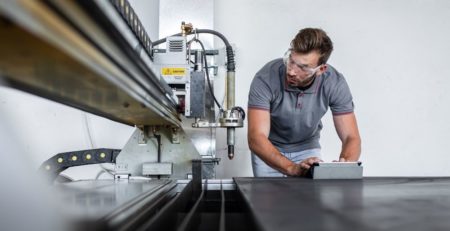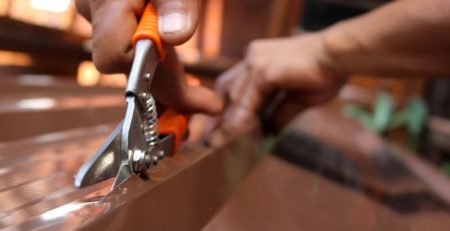Air Bending vs. Bottom Bending: 3 Key Differences
Air bending and bottom bending are two common techniques used in metal fabrication. Although press brakes with the appropriate tool and die attachments can perform both types of bending, there are distinct differences between the two methods. With air bending versus bottom bending, three key differences affect the quality of the final product.
Difference 1: How Deeply the Machine Pushes the Metal Into the Die
One of the most significant differences between air bending and bottom bending lies in how far the machine pushes the metal into the die. In air bending, the punch does not push the metal all the way to the bottom of the die. Instead, it creates a shallower bend, touching the die only at its “shoulders” or sides but not at the V-shaped angle at the maximum depth of the die. Thus, it leaves air (or space) between the punch and the bottom of the die.
This technique offers flexibility, as it can produce different angles from the same tooling set depending on how deep the operator pushes the metal. However, workpieces bent using air bending are subject to greater spring back, meaning the bent metal tends to try to move back to its original shape, reducing the accuracy of the bent angle.
Bottom bending is exactly what the name implies: the punch pushes the metal fully into the bottom of the die to create the bend. The metal takes the exact shape of the die, resulting in more precise angles than are possible in air bending. But with bottom bending, a change in the desired angle of the bend requires a change of tooling, and there is still a degree of spring back.
Difference 2: Precision vs. Speed
Another key distinction between air bending and bottom bending relates to precision and speed. With air bending, a CNC press brake machine can achieve high bending speeds with consistent results due to the precise control of the depth of the punch into the die.
Bottom bending prioritizes precision over speed. The CNC press brake machine pushes the metal fully into the die, resulting in highly accurate bends. However, this method is slower due to the increased depth of penetration and the need to retool to create bends with different angles.
Difference 3: Tonnage and Coining
Coining is an extreme type of bottom bending. The name comes from coin making, where extraordinarily strong force causes the metal to take on the design embedded in the die to create the face of the coins.
When used in the context of metal bending, coining means pressing the metal into the die so powerfully that it takes on the exact shape of the die. The process causes the metal to thin due to the powerful compression.
Bottom bending doesn’t use as much tonnage as coining but does use more than air bending. Bottom bending requires higher tonnage for the metal to conform more closely to the shape (angle) of the die. The downside is that higher tonnage can lead to increased wear on the machine and tooling.
Tonnage is less of an issue for air bending because the ram doesn’t have to push the metal all the way down to the bottom of the die. That means less force is necessary. The angle achieved in the bent metal depends only on how deeply the punch pushes the metal toward the die, not on high-pressure contact with the die.
Understanding these three key differences between air bending and bottom bending helps fabricators select the most appropriate method for their specific metal bending projects based on speed, flexibility, or precision.



